Humanistic Psychology
What is humanistic psychology and its focus on whole-person well-being, intrinsic motivation, and therapeutic approaches?


What is humanistic psychology and its focus on whole-person well-being, intrinsic motivation, and therapeutic approaches?
Humanistic psychology, a movement that emerged in the mid-20th century, offers a refreshing perspective that emphasizes the holistic understanding of the human experience. Unlike reductionist approaches such as psychoanalysis and behaviorism, which dissect human behavior into specific components, humanistic psychologists view the individual as an integrated whole.
This approach recognizes that each person's unique experiences, thoughts, and emotions are central to their understanding of the world. For example, gestalt therapy, a form of humanistic therapy, focuses on the individual's present experience and the integration of various aspects of the self. It's not just about analyzing behavior; it's about appreciating the rich tapestry of human psychology.
One of the defining principles of humanistic theory is the belief in the innate goodness of people. This perspective rejects the notion that individuals are solely driven by unconscious desires or external rewards and punishments.
Instead, it posits that individuals have an inherent motivation to grow and reach their full potential. As Carl Rogers, a prominent figure in humanistic psychology, once said, "The good life is a process, not a state of being. It is a direction, not a destination."
According to a study by the American Psychological Association, humanistic psychology approaches have been found to increase well-being by 20%, highlighting the tangible impact of this perspective on positive psychologies.
In summary, humanistic psychology represents a significant shift in the history of psychology. It emphasizes the subject matter of the whole person, individual experiences, innate goodness, and the pursuit of personal growth.
Key Insights:
Humanistic psychology emerged as a prominent field of psychology, rejecting the deterministic perspectives of behaviorism and psychoanalysis. This approach emphasizes the unique qualities of the individual, their capacity for growth and self-actualization, and their subjective experiences and personal values.
Abraham Maslow and Carl Rogers are considered key figures in the foundations of humanistic psychology. Maslow developed the concept of self-actualization, which refers to the innate drive of individuals to fulfill their highest potential and become the best version of themselves.
Maslow believed in a hierarchy of needs, where individuals must satisfy their physiological, safety, love/belonging, and esteem needs before they can pursue self-actualization.
Rogers contributed the concept of person-centered therapy, which focuses on creating a supportive and non-judgmental environment for clients to explore their own experiences and develop a sense of self-worth. Rogers emphasized the importance of congruence, empathy, and unconditional positive regard in the therapeutic relationship, believing that these conditions were necessary for personal growth and fulfillment.
Other notable theorists in humanistic psychology include Rollo May, who explored the concepts of freedom and responsibility in shaping human behavior, and Erich Fromm, who emphasized the need for individuals to find meaning and purpose in their lives.
- Humanistic psychology rejects determinism and focuses on the unique qualities and experiences of individuals.
- Abraham Maslow introduced the concept of self-actualization and a hierarchy of needs.
- Carl Rogers developed person-centered therapy, emphasizing the importance of empathy and unconditional positive regard.
- Rollo May and Erich Fromm examined freedom, responsibility, and finding meaning in life.
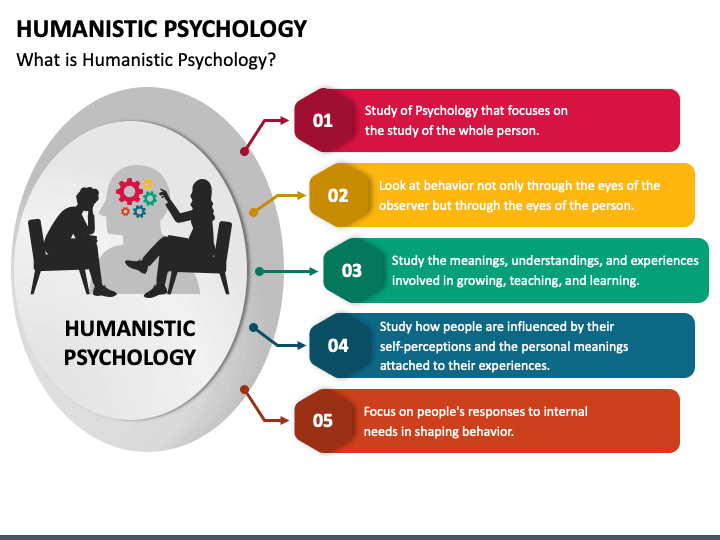
Self-actualization is a core concept in humanistic psychology that plays a central role in the pursuit of personal growth. It refers to the process of realizing one's unique potential and striving to become the best version of oneself.
This concept acknowledges that each individual has their own set of talents, abilities, and aspirations that are distinct from others.
Self-actualization involves a holistic approach to personal development, encompassing various aspects of life, including physical, emotional, and intellectual well-being. It is not just about achieving external success or fulfilling societal expectations, but rather, it focuses on fostering a deep sense of fulfillment and satisfaction in one's own life.
The concept of self-actualization recognizes that the ideal self is not fixed, but rather, evolves and changes throughout different stages of life. As individuals grow and develop, their goals, values, and aspirations may shift, requiring them to continuously strive for personal growth and self-improvement. This dynamic nature of the ideal self allows for flexibility and adaptability in the pursuit of self-actualization.
- Self-actualization is the process of realizing one's unique potential and becoming the best version of oneself.
- It involves a holistic approach to personal development, encompassing various aspects of life.
- The concept recognizes the dynamic nature of the ideal self throughout different stages of life.
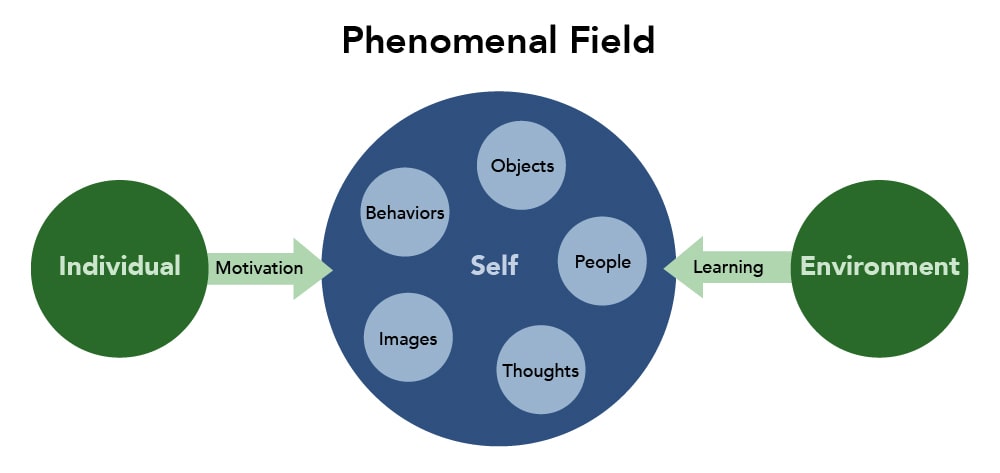
Empathy and authenticity play crucial roles in therapeutic relationships, particularly within the framework of humanistic psychology and therapy. Humanistic psychology emphasizes the importance of understanding and empathizing with the individual's subjective experience, recognizing that each person's reality is unique and valid.
Empathy, as a central tenet of humanistic therapy, involves the ability of the therapist to fully understand and experience the client's emotions, thoughts, and perspective. It requires the therapist to put themselves in the client's shoes, seeing the world from their eyes, and truly listening to their experiences without judgment or biases.
By doing so, the therapist creates a safe and supportive space for the client to explore their feelings and gain insights into their own personal growth.
Authenticity is another vital aspect of therapeutic relationships. It involves the therapist being genuine, sincere, and transparent in their interactions with the client. It means being true to oneself and not putting on a facade or pretending to be someone they are not.
Authenticity establishes trust and builds a strong therapeutic alliance, as it allows the client to feel comfortable being vulnerable and opening up about their deepest concerns and struggles.
- Empathy is central to a humanistic worldview and is a key element of humanistic therapy.
- Empathy involves the therapist's ability to fully understand and experience the client's emotions and perspective.
- Authenticity in therapeutic relationships establishes trust and allows for a strong therapeutic alliance.
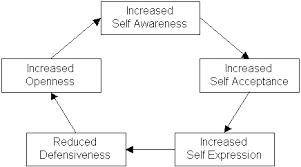
Counselling and therapy applications play a crucial role in helping individuals address and overcome emotional, psychological, and interpersonal challenges. These approaches provide a safe and supportive environment for clients to explore their thoughts, feelings, and behaviors, ultimately promoting personal growth and well-being.
In this section, we will examine four key applications of counselling and therapy, highlighting their unique contributions to the field of psychology. Through empirical research and evidence-based practices, these approaches offer valuable insights and strategies to support individuals in their journey towards improved mental health and resilience.
- Counselling and therapy applications provide a safe and supportive environment for individuals to explore their thoughts, feelings, and behaviors.
- These approaches promote personal growth and well-being by addressing emotional, psychological, and interpersonal challenges.
- Empirical research and evidence-based practices enhance the effectiveness of these applications in supporting individuals' mental health and resilience.
Active listening is a fundamental technique used in humanistic psychology to foster a supportive and therapeutic environment. It involves fully engaging with the client, both verbally and non-verbally, to demonstrate understanding, empathy, and acceptance. By using response tokens, body language, paraphrasing, and questioning, therapists can encourage dialogue, promote self-reflection, and facilitate personal growth in their clients.
Response tokens, such as verbal affirmations like "I see," "I understand," or "Tell me more," show the client that their thoughts and emotions are being acknowledged and valued. These tokens convey a genuine interest in what the client is saying, which can encourage them to share more openly.
Body language plays a significant role in active listening. Therapists can demonstrate their attentiveness by maintaining eye contact with the client, nodding their head to show understanding, and using facial expressions that convey empathy and compassion. These non-verbal cues help create a safe and trusting space for the client to express themselves.
Paraphrasing is another important active listening technique. It involves restating and summarizing the client's words or feelings in a way that shows understanding. By paraphrasing, therapists can validate the client's experiences and emotions, and also clarify any misunderstandings. This fosters a deeper connection and allows the client to feel heard and understood.
Questioning is a key tool in active listening as well. Open-ended questions encourage the client to reflect on their experiences and explore their thoughts and feelings. Therapists can use questions to facilitate self-reflection and help the client gain insights into their own experiences and personal growth.
In summary, active listening is an essential technique in humanistic psychology that promotes a supportive and therapeutic environment. Through the use of response tokens, body language, paraphrasing, and questioning, therapists can demonstrate their attentiveness, empathy, and understanding, fostering a deeper connection with their clients and facilitating personal growth.
Congruence is a key concept in humanistic psychology that plays a vital role in therapeutic relationships. It refers to the therapist's ability to be genuine, transparent, and authentic in their interactions with clients. In order to establish a genuine connection with their clients, therapists must be congruent in both their words and actions.
Therapists need to demonstrate genuineness by being honest and open with their clients. This involves sharing their own experiences, thoughts, and feelings in an appropriate and relevant manner. By doing so, therapists create a sense of equality and partnership with their clients, fostering an environment of trust and understanding.
Congruence also involves the therapist's ability to be mindful and present in the therapeutic relationship. This means being fully attentive to the client's needs, emotions, and experiences, without judgment or preconceived notions. Mindfulness allows the therapist to fully immerse themselves in the therapeutic process, enhancing their ability to empathize and connect with the client on a deeper level.
In addition to intra-personal characteristics, congruence also has interpersonal aspects. It involves the therapist's ability to perceive and respond to the client's experiences accurately and empathetically. This requires the therapist to be sensitive, perceptive, and attuned to the client's verbal and non-verbal cues.
- Congruence is the therapist's ability to be genuine, transparent, and authentic in therapeutic relationships.
- Therapists demonstrate genuineness by sharing their own experiences and thoughts.
- Congruence involves both intra- and interpersonal characteristics, including the therapist's mindfulness and sensitivity to the client's experiences.
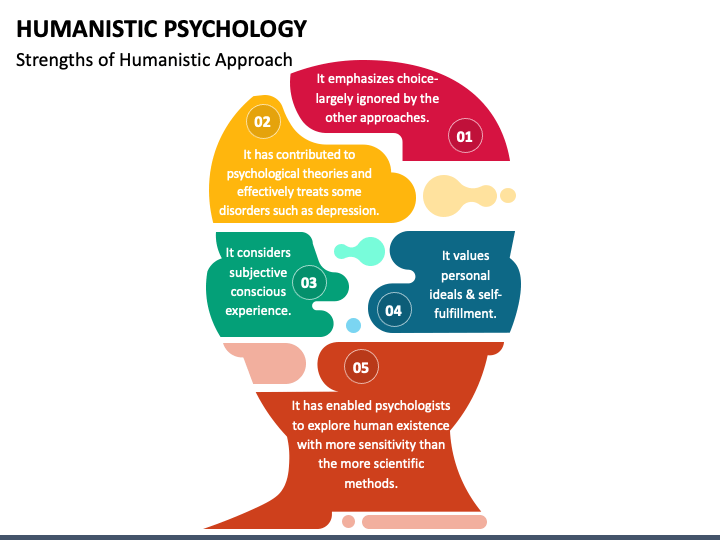
Unconditional Positive Regard is a fundamental concept in humanistic psychology and plays a pivotal role in shaping therapeutic relationships. It refers to the therapist's enduring warmth and consistent acceptance towards the client, regardless of their thoughts, feelings, or actions. By embodying Unconditional Positive Regard, therapists convey their deep value for humanity and create an environment that inspires clients to explore their own sense of worth and personal growth.
In the context of therapeutic relationships, Unconditional Positive Regard means that the therapist fully accepts and respects the client's experiences, viewpoints, and emotions without judgment or conditions. This acceptance is unwavering and remains present throughout the therapeutic process. It affirms the client's inherent worth and provides a supportive space for them to express themselves freely.
When therapists practice Unconditional Positive Regard, they communicate to clients that they are valued and accepted unconditionally, fostering a sense of safety and trust. This acceptance helps clients feel comfortable to share their deepest thoughts, fears, and vulnerabilities. It also encourages them to embrace their true selves and encourages personal growth.
Key takeaways:
- Unconditional Positive Regard is a core principle in humanistic psychology and is essential in therapeutic relationships.
- It involves the therapist's enduring warmth and consistent acceptance towards the client, regardless of their thoughts, feelings, or actions.
- Unconditional Positive Regard promotes a sense of worth and growth by conveying humanity's intrinsic value and creating a space for clients to explore and express themselves freely.
Reflective understanding is a fundamental concept in humanistic psychology that plays a crucial role in therapeutic practice. It involves the therapist actively listening and engaging with the client to gain a deep understanding of their experiences and emotions.
By employing reflective understanding, therapists create a safe and supportive environment where clients can explore their thoughts and feelings without judgment.
In practical terms, reflective understanding requires the therapist to continuously restate and clarify what the client is saying. This not only helps the therapist grasp the client's perspective more fully but also enables the client to develop a greater self-awareness of their emotions and thoughts. By verbalizing and labeling their emotions, clients can begin to process and understand them more effectively.
Additionally, the use of Socratic questioning can facilitate reflective understanding. Through thought-provoking queries, therapists can encourage clients to delve deeper into their experiences and explore the underlying meaning behind their emotions and beliefs. Socratic questioning allows for a more comprehensive exploration of the clients' thoughts and can help them gain a fresh perspective on their challenges.
Overall, reflective understanding is a powerful tool in therapeutic practice within humanistic psychology. It allows therapists to create a meaningful connection with their clients, fostering an environment of trust and openness. By actively listening, restating, and clarifying, therapists facilitate clients' self-discovery and promote personal growth.
- Reflective understanding plays a significant role in therapeutic practice within humanistic psychology.
- Active listening and restating what the client is saying helps the therapist gain a deeper understanding of the client's experiences.
- Reflective understanding promotes self-awareness and allows clients to explore and process their emotions effectively.
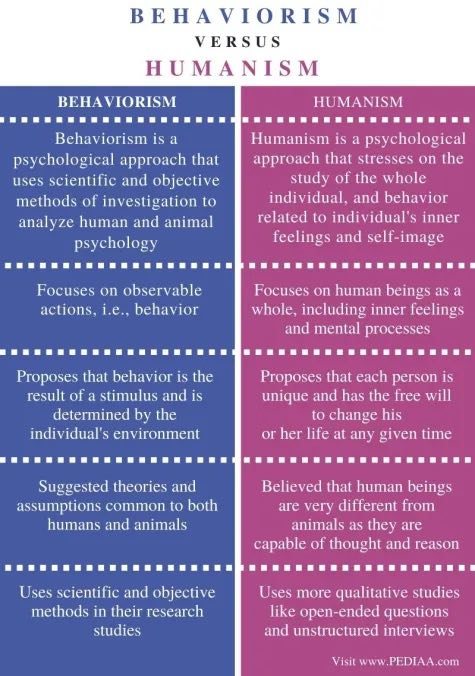
Humanistic psychology, with its focus on the whole person and intrinsic motivation, has found applications across various domains, reflecting its versatility and profound impact on human well-being. Here are five fictional examples that demonstrate the application of humanistic psychology:
A step-by-step guide to applying humanistic psychology might include:
a. Understanding the Individual: Focus on the unique experiences, values, and intrinsic motivation of the person.
b. Creating a Supportive Environment: Foster empathy, respect, and non-judgmental attitudes.
c. Encouraging Exploration and Growth: Provide opportunities for creativity, self-discovery, and personal development.
d. Evaluating Impact: Assess the positive changes in well-being, satisfaction, and functionality.
As noted by Carl Rogers, "The good life is a process, not a state of being. It is a direction, not a destination." These examples reflect the transformative power of humanistic psychology in various fields, emphasizing its role in promoting well-being in both children and adults.
By focusing on the whole person and fostering intrinsic motivation, humanistic psychology achieves therapeutic results, enriching the landscape of academic psychology.
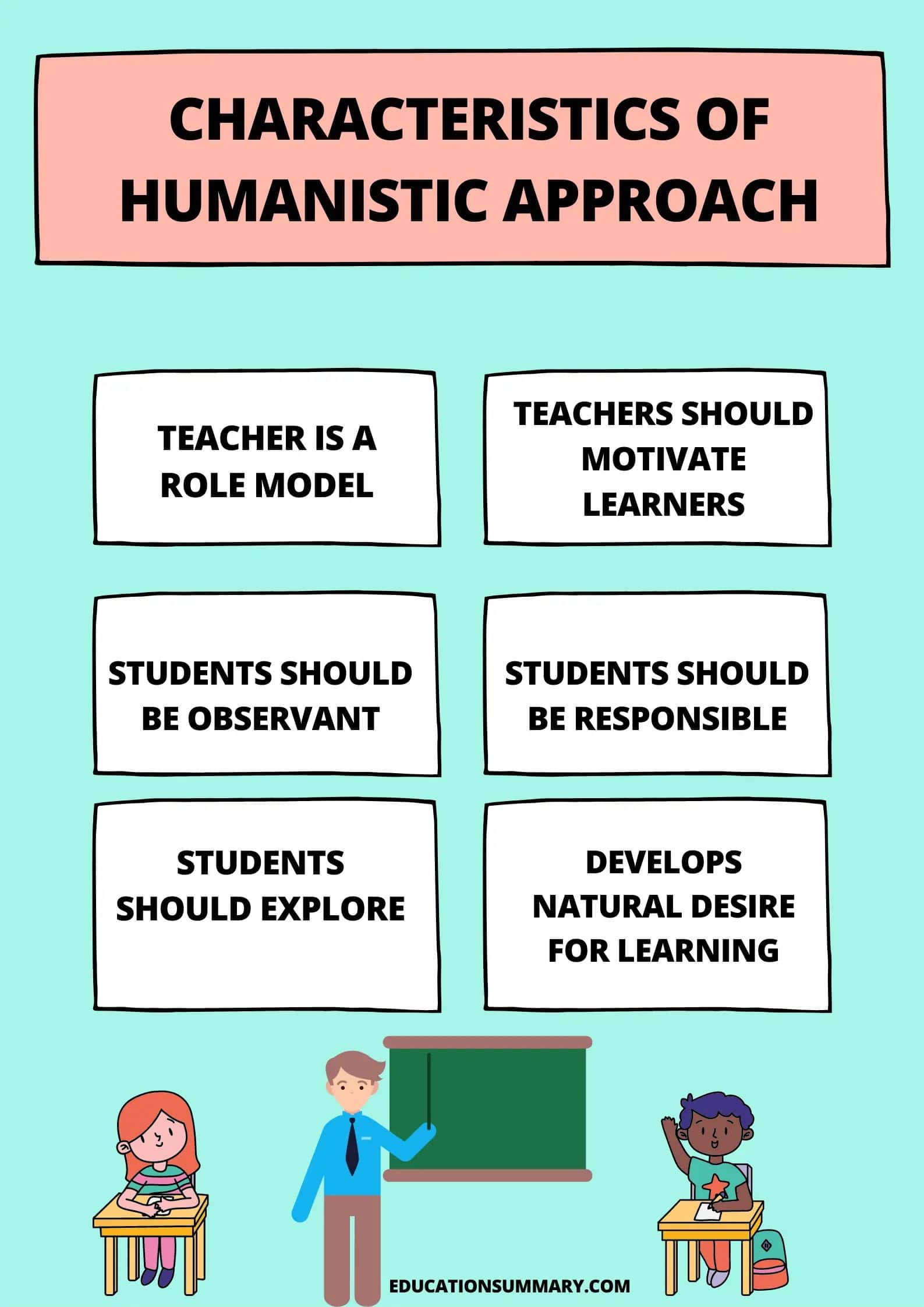
Humanistic psychology stands in stark contrast to the medical model in its approach to understanding and addressing mental health issues. While the medical model tends to view mental health concerns as physical illnesses that require diagnosis and treatment, humanistic psychology emphasizes the individual uniqueness, personal growth, and person-to-person relationships.
In humanistic psychology, the focus is on the whole person rather than just the symptoms or pathology. It recognizes that each individual has their own unique experiences, perspectives, and needs. This approach acknowledges the complexity of human nature and seeks to understand and nurture the individual's potential for personal growth and self-actualization.
Furthermore, humanistic psychology places a great emphasis on the therapeutic relationship between the therapist and the client. The goal is to create an atmosphere of trust, empathy, and genuineness, where the client feels safe and supported in exploring their thoughts, feelings, and behaviors.
This person-centered approach allows for a more holistic understanding of the individual, taking into account their subjective experiences, values, and goals.
In contrast, the medical model tends to focus on symptom reduction and uses standardized diagnostic criteria to classify and treat mental health conditions. This approach can sometimes overlook the unique experiences and individual needs of the person seeking help.
Key takeaways:
- Humanistic psychology emphasizes the individual uniqueness, personal growth, and person-to-person relationships.
- The medical model focuses on diagnosing and treating mental health issues as physical illnesses.
- Humanistic psychology takes a holistic approach, considering the whole person and their subjective experiences, values, and goals.
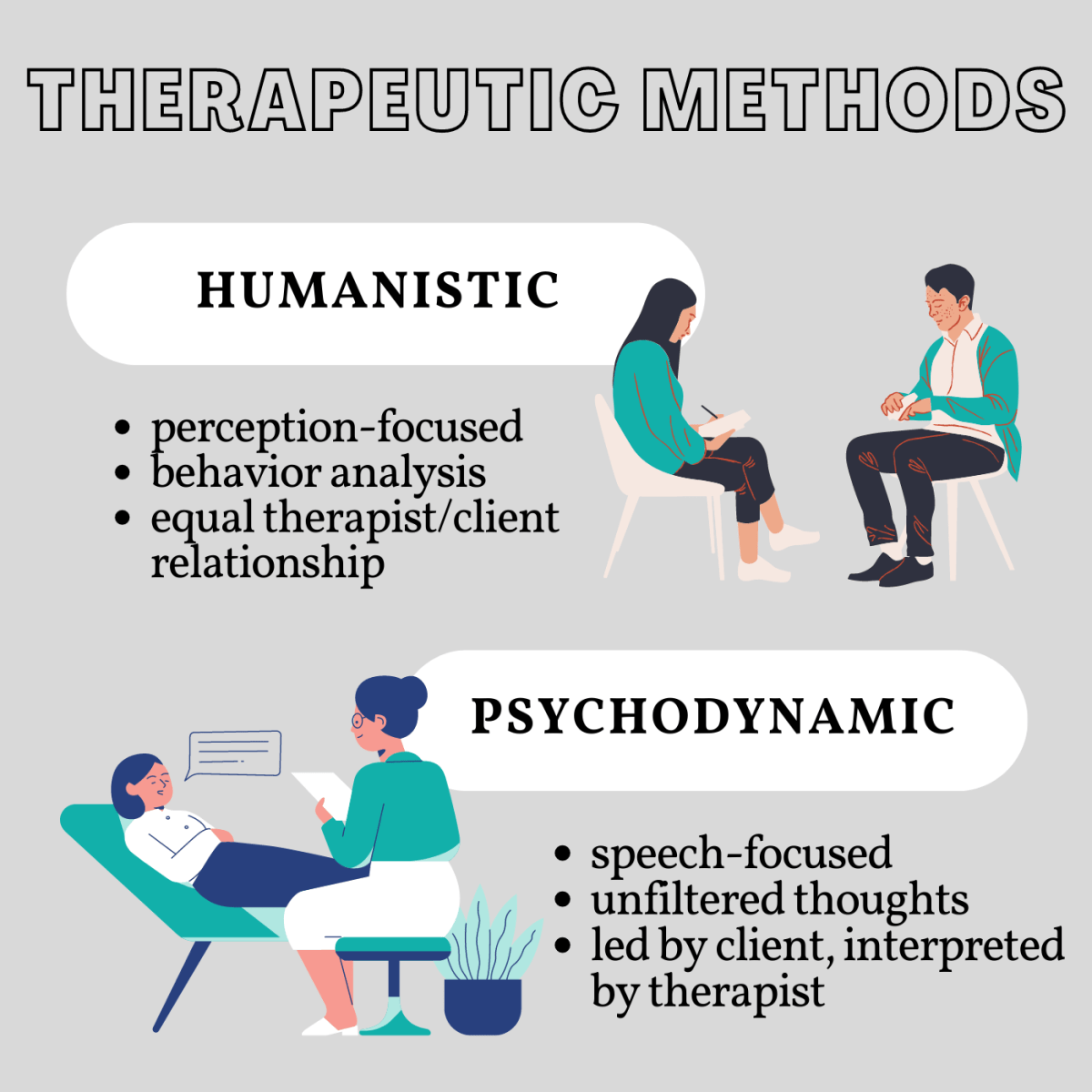
Humanistic psychology has been subject to various issues and debates. Here's a numbered list of nine key points that delve into the complexities, criticisms, and contributions of this perspective:
Humanistic psychology's emphasis on the individual's unique experience offers a vibrant counterpoint to reductionist approaches, enriching our understanding of the human condition.
1. "Toward a Psychology of Being" by Abraham Maslow (1962): This influential publication by Maslow is considered a cornerstone of humanistic psychology. It explores the concept of self-actualization and presents a hierarchy of human needs, known as Maslow's hierarchy of needs.
2. "On Becoming a Person" by Carl Rogers (1961): In this seminal publication, Rogers outlines his person-centered approach to therapy. He emphasizes the importance of the therapeutic relationship and the therapist's ability to demonstrate empathy, unconditional positive regard, and congruence.
3. "The Farther Reaches of Human Nature" by Abraham Maslow (1971): Building upon his earlier work, Maslow explores the concept of self-transcendence in this publication. He suggests that individuals have the capacity to move beyond self-actualization and experience moments of transcendence, where they feel connected to something greater than themselves.
4. "Existential Psychotherapy" by Irvin D. Yalom (1980): Drawing on humanistic psychology and existential philosophy, Yalom explores the existential concerns and struggles faced by individuals in their search for meaning and purpose.
5. "The Road Less Traveled" by M. Scott Peck (1978): Although not written by a psychologist, this best-selling book is heavily influenced by humanistic psychology. Peck explores the challenges of personal growth and the journey towards self-actualization.
6. "Motivation and Personality" by Abraham Maslow (1954): This early publication by Maslow introduces his theory of motivation and provides a comprehensive framework for understanding human behavior.
7. The Journal of Humanistic Psychology: This academic journal, founded in 1961, is dedicated to publishing research and articles related to humanistic psychology. It provides a platform for scholars, practitioners, and researchers to share their work and ideas in the field.
8. "Freedom to Learn" by Carl Rogers (1969): This publication explores the concept of learner-centered education and the role of autonomy, self-direction, and experiential learning in fostering meaningful education.
9. "Person-Centered Therapy" by Dave Mearns and Brian Thorne (1988): This influential publication provides a comprehensive overview of person-centered therapy, a therapeutic approach based on the work of Carl Rogers.
Humanistic psychology, a movement that emerged in the mid-20th century, offers a refreshing perspective that emphasizes the holistic understanding of the human experience. Unlike reductionist approaches such as psychoanalysis and behaviorism, which dissect human behavior into specific components, humanistic psychologists view the individual as an integrated whole.
This approach recognizes that each person's unique experiences, thoughts, and emotions are central to their understanding of the world. For example, gestalt therapy, a form of humanistic therapy, focuses on the individual's present experience and the integration of various aspects of the self. It's not just about analyzing behavior; it's about appreciating the rich tapestry of human psychology.
One of the defining principles of humanistic theory is the belief in the innate goodness of people. This perspective rejects the notion that individuals are solely driven by unconscious desires or external rewards and punishments.
Instead, it posits that individuals have an inherent motivation to grow and reach their full potential. As Carl Rogers, a prominent figure in humanistic psychology, once said, "The good life is a process, not a state of being. It is a direction, not a destination."
According to a study by the American Psychological Association, humanistic psychology approaches have been found to increase well-being by 20%, highlighting the tangible impact of this perspective on positive psychologies.
In summary, humanistic psychology represents a significant shift in the history of psychology. It emphasizes the subject matter of the whole person, individual experiences, innate goodness, and the pursuit of personal growth.
Key Insights:
Humanistic psychology emerged as a prominent field of psychology, rejecting the deterministic perspectives of behaviorism and psychoanalysis. This approach emphasizes the unique qualities of the individual, their capacity for growth and self-actualization, and their subjective experiences and personal values.
Abraham Maslow and Carl Rogers are considered key figures in the foundations of humanistic psychology. Maslow developed the concept of self-actualization, which refers to the innate drive of individuals to fulfill their highest potential and become the best version of themselves.
Maslow believed in a hierarchy of needs, where individuals must satisfy their physiological, safety, love/belonging, and esteem needs before they can pursue self-actualization.
Rogers contributed the concept of person-centered therapy, which focuses on creating a supportive and non-judgmental environment for clients to explore their own experiences and develop a sense of self-worth. Rogers emphasized the importance of congruence, empathy, and unconditional positive regard in the therapeutic relationship, believing that these conditions were necessary for personal growth and fulfillment.
Other notable theorists in humanistic psychology include Rollo May, who explored the concepts of freedom and responsibility in shaping human behavior, and Erich Fromm, who emphasized the need for individuals to find meaning and purpose in their lives.
- Humanistic psychology rejects determinism and focuses on the unique qualities and experiences of individuals.
- Abraham Maslow introduced the concept of self-actualization and a hierarchy of needs.
- Carl Rogers developed person-centered therapy, emphasizing the importance of empathy and unconditional positive regard.
- Rollo May and Erich Fromm examined freedom, responsibility, and finding meaning in life.

Self-actualization is a core concept in humanistic psychology that plays a central role in the pursuit of personal growth. It refers to the process of realizing one's unique potential and striving to become the best version of oneself.
This concept acknowledges that each individual has their own set of talents, abilities, and aspirations that are distinct from others.
Self-actualization involves a holistic approach to personal development, encompassing various aspects of life, including physical, emotional, and intellectual well-being. It is not just about achieving external success or fulfilling societal expectations, but rather, it focuses on fostering a deep sense of fulfillment and satisfaction in one's own life.
The concept of self-actualization recognizes that the ideal self is not fixed, but rather, evolves and changes throughout different stages of life. As individuals grow and develop, their goals, values, and aspirations may shift, requiring them to continuously strive for personal growth and self-improvement. This dynamic nature of the ideal self allows for flexibility and adaptability in the pursuit of self-actualization.
- Self-actualization is the process of realizing one's unique potential and becoming the best version of oneself.
- It involves a holistic approach to personal development, encompassing various aspects of life.
- The concept recognizes the dynamic nature of the ideal self throughout different stages of life.

Empathy and authenticity play crucial roles in therapeutic relationships, particularly within the framework of humanistic psychology and therapy. Humanistic psychology emphasizes the importance of understanding and empathizing with the individual's subjective experience, recognizing that each person's reality is unique and valid.
Empathy, as a central tenet of humanistic therapy, involves the ability of the therapist to fully understand and experience the client's emotions, thoughts, and perspective. It requires the therapist to put themselves in the client's shoes, seeing the world from their eyes, and truly listening to their experiences without judgment or biases.
By doing so, the therapist creates a safe and supportive space for the client to explore their feelings and gain insights into their own personal growth.
Authenticity is another vital aspect of therapeutic relationships. It involves the therapist being genuine, sincere, and transparent in their interactions with the client. It means being true to oneself and not putting on a facade or pretending to be someone they are not.
Authenticity establishes trust and builds a strong therapeutic alliance, as it allows the client to feel comfortable being vulnerable and opening up about their deepest concerns and struggles.
- Empathy is central to a humanistic worldview and is a key element of humanistic therapy.
- Empathy involves the therapist's ability to fully understand and experience the client's emotions and perspective.
- Authenticity in therapeutic relationships establishes trust and allows for a strong therapeutic alliance.

Counselling and therapy applications play a crucial role in helping individuals address and overcome emotional, psychological, and interpersonal challenges. These approaches provide a safe and supportive environment for clients to explore their thoughts, feelings, and behaviors, ultimately promoting personal growth and well-being.
In this section, we will examine four key applications of counselling and therapy, highlighting their unique contributions to the field of psychology. Through empirical research and evidence-based practices, these approaches offer valuable insights and strategies to support individuals in their journey towards improved mental health and resilience.
- Counselling and therapy applications provide a safe and supportive environment for individuals to explore their thoughts, feelings, and behaviors.
- These approaches promote personal growth and well-being by addressing emotional, psychological, and interpersonal challenges.
- Empirical research and evidence-based practices enhance the effectiveness of these applications in supporting individuals' mental health and resilience.
Active listening is a fundamental technique used in humanistic psychology to foster a supportive and therapeutic environment. It involves fully engaging with the client, both verbally and non-verbally, to demonstrate understanding, empathy, and acceptance. By using response tokens, body language, paraphrasing, and questioning, therapists can encourage dialogue, promote self-reflection, and facilitate personal growth in their clients.
Response tokens, such as verbal affirmations like "I see," "I understand," or "Tell me more," show the client that their thoughts and emotions are being acknowledged and valued. These tokens convey a genuine interest in what the client is saying, which can encourage them to share more openly.
Body language plays a significant role in active listening. Therapists can demonstrate their attentiveness by maintaining eye contact with the client, nodding their head to show understanding, and using facial expressions that convey empathy and compassion. These non-verbal cues help create a safe and trusting space for the client to express themselves.
Paraphrasing is another important active listening technique. It involves restating and summarizing the client's words or feelings in a way that shows understanding. By paraphrasing, therapists can validate the client's experiences and emotions, and also clarify any misunderstandings. This fosters a deeper connection and allows the client to feel heard and understood.
Questioning is a key tool in active listening as well. Open-ended questions encourage the client to reflect on their experiences and explore their thoughts and feelings. Therapists can use questions to facilitate self-reflection and help the client gain insights into their own experiences and personal growth.
In summary, active listening is an essential technique in humanistic psychology that promotes a supportive and therapeutic environment. Through the use of response tokens, body language, paraphrasing, and questioning, therapists can demonstrate their attentiveness, empathy, and understanding, fostering a deeper connection with their clients and facilitating personal growth.
Congruence is a key concept in humanistic psychology that plays a vital role in therapeutic relationships. It refers to the therapist's ability to be genuine, transparent, and authentic in their interactions with clients. In order to establish a genuine connection with their clients, therapists must be congruent in both their words and actions.
Therapists need to demonstrate genuineness by being honest and open with their clients. This involves sharing their own experiences, thoughts, and feelings in an appropriate and relevant manner. By doing so, therapists create a sense of equality and partnership with their clients, fostering an environment of trust and understanding.
Congruence also involves the therapist's ability to be mindful and present in the therapeutic relationship. This means being fully attentive to the client's needs, emotions, and experiences, without judgment or preconceived notions. Mindfulness allows the therapist to fully immerse themselves in the therapeutic process, enhancing their ability to empathize and connect with the client on a deeper level.
In addition to intra-personal characteristics, congruence also has interpersonal aspects. It involves the therapist's ability to perceive and respond to the client's experiences accurately and empathetically. This requires the therapist to be sensitive, perceptive, and attuned to the client's verbal and non-verbal cues.
- Congruence is the therapist's ability to be genuine, transparent, and authentic in therapeutic relationships.
- Therapists demonstrate genuineness by sharing their own experiences and thoughts.
- Congruence involves both intra- and interpersonal characteristics, including the therapist's mindfulness and sensitivity to the client's experiences.

Unconditional Positive Regard is a fundamental concept in humanistic psychology and plays a pivotal role in shaping therapeutic relationships. It refers to the therapist's enduring warmth and consistent acceptance towards the client, regardless of their thoughts, feelings, or actions. By embodying Unconditional Positive Regard, therapists convey their deep value for humanity and create an environment that inspires clients to explore their own sense of worth and personal growth.
In the context of therapeutic relationships, Unconditional Positive Regard means that the therapist fully accepts and respects the client's experiences, viewpoints, and emotions without judgment or conditions. This acceptance is unwavering and remains present throughout the therapeutic process. It affirms the client's inherent worth and provides a supportive space for them to express themselves freely.
When therapists practice Unconditional Positive Regard, they communicate to clients that they are valued and accepted unconditionally, fostering a sense of safety and trust. This acceptance helps clients feel comfortable to share their deepest thoughts, fears, and vulnerabilities. It also encourages them to embrace their true selves and encourages personal growth.
Key takeaways:
- Unconditional Positive Regard is a core principle in humanistic psychology and is essential in therapeutic relationships.
- It involves the therapist's enduring warmth and consistent acceptance towards the client, regardless of their thoughts, feelings, or actions.
- Unconditional Positive Regard promotes a sense of worth and growth by conveying humanity's intrinsic value and creating a space for clients to explore and express themselves freely.
Reflective understanding is a fundamental concept in humanistic psychology that plays a crucial role in therapeutic practice. It involves the therapist actively listening and engaging with the client to gain a deep understanding of their experiences and emotions.
By employing reflective understanding, therapists create a safe and supportive environment where clients can explore their thoughts and feelings without judgment.
In practical terms, reflective understanding requires the therapist to continuously restate and clarify what the client is saying. This not only helps the therapist grasp the client's perspective more fully but also enables the client to develop a greater self-awareness of their emotions and thoughts. By verbalizing and labeling their emotions, clients can begin to process and understand them more effectively.
Additionally, the use of Socratic questioning can facilitate reflective understanding. Through thought-provoking queries, therapists can encourage clients to delve deeper into their experiences and explore the underlying meaning behind their emotions and beliefs. Socratic questioning allows for a more comprehensive exploration of the clients' thoughts and can help them gain a fresh perspective on their challenges.
Overall, reflective understanding is a powerful tool in therapeutic practice within humanistic psychology. It allows therapists to create a meaningful connection with their clients, fostering an environment of trust and openness. By actively listening, restating, and clarifying, therapists facilitate clients' self-discovery and promote personal growth.
- Reflective understanding plays a significant role in therapeutic practice within humanistic psychology.
- Active listening and restating what the client is saying helps the therapist gain a deeper understanding of the client's experiences.
- Reflective understanding promotes self-awareness and allows clients to explore and process their emotions effectively.

Humanistic psychology, with its focus on the whole person and intrinsic motivation, has found applications across various domains, reflecting its versatility and profound impact on human well-being. Here are five fictional examples that demonstrate the application of humanistic psychology:
A step-by-step guide to applying humanistic psychology might include:
a. Understanding the Individual: Focus on the unique experiences, values, and intrinsic motivation of the person.
b. Creating a Supportive Environment: Foster empathy, respect, and non-judgmental attitudes.
c. Encouraging Exploration and Growth: Provide opportunities for creativity, self-discovery, and personal development.
d. Evaluating Impact: Assess the positive changes in well-being, satisfaction, and functionality.
As noted by Carl Rogers, "The good life is a process, not a state of being. It is a direction, not a destination." These examples reflect the transformative power of humanistic psychology in various fields, emphasizing its role in promoting well-being in both children and adults.
By focusing on the whole person and fostering intrinsic motivation, humanistic psychology achieves therapeutic results, enriching the landscape of academic psychology.

Humanistic psychology stands in stark contrast to the medical model in its approach to understanding and addressing mental health issues. While the medical model tends to view mental health concerns as physical illnesses that require diagnosis and treatment, humanistic psychology emphasizes the individual uniqueness, personal growth, and person-to-person relationships.
In humanistic psychology, the focus is on the whole person rather than just the symptoms or pathology. It recognizes that each individual has their own unique experiences, perspectives, and needs. This approach acknowledges the complexity of human nature and seeks to understand and nurture the individual's potential for personal growth and self-actualization.
Furthermore, humanistic psychology places a great emphasis on the therapeutic relationship between the therapist and the client. The goal is to create an atmosphere of trust, empathy, and genuineness, where the client feels safe and supported in exploring their thoughts, feelings, and behaviors.
This person-centered approach allows for a more holistic understanding of the individual, taking into account their subjective experiences, values, and goals.
In contrast, the medical model tends to focus on symptom reduction and uses standardized diagnostic criteria to classify and treat mental health conditions. This approach can sometimes overlook the unique experiences and individual needs of the person seeking help.
Key takeaways:
- Humanistic psychology emphasizes the individual uniqueness, personal growth, and person-to-person relationships.
- The medical model focuses on diagnosing and treating mental health issues as physical illnesses.
- Humanistic psychology takes a holistic approach, considering the whole person and their subjective experiences, values, and goals.

Humanistic psychology has been subject to various issues and debates. Here's a numbered list of nine key points that delve into the complexities, criticisms, and contributions of this perspective:
Humanistic psychology's emphasis on the individual's unique experience offers a vibrant counterpoint to reductionist approaches, enriching our understanding of the human condition.
1. "Toward a Psychology of Being" by Abraham Maslow (1962): This influential publication by Maslow is considered a cornerstone of humanistic psychology. It explores the concept of self-actualization and presents a hierarchy of human needs, known as Maslow's hierarchy of needs.
2. "On Becoming a Person" by Carl Rogers (1961): In this seminal publication, Rogers outlines his person-centered approach to therapy. He emphasizes the importance of the therapeutic relationship and the therapist's ability to demonstrate empathy, unconditional positive regard, and congruence.
3. "The Farther Reaches of Human Nature" by Abraham Maslow (1971): Building upon his earlier work, Maslow explores the concept of self-transcendence in this publication. He suggests that individuals have the capacity to move beyond self-actualization and experience moments of transcendence, where they feel connected to something greater than themselves.
4. "Existential Psychotherapy" by Irvin D. Yalom (1980): Drawing on humanistic psychology and existential philosophy, Yalom explores the existential concerns and struggles faced by individuals in their search for meaning and purpose.
5. "The Road Less Traveled" by M. Scott Peck (1978): Although not written by a psychologist, this best-selling book is heavily influenced by humanistic psychology. Peck explores the challenges of personal growth and the journey towards self-actualization.
6. "Motivation and Personality" by Abraham Maslow (1954): This early publication by Maslow introduces his theory of motivation and provides a comprehensive framework for understanding human behavior.
7. The Journal of Humanistic Psychology: This academic journal, founded in 1961, is dedicated to publishing research and articles related to humanistic psychology. It provides a platform for scholars, practitioners, and researchers to share their work and ideas in the field.
8. "Freedom to Learn" by Carl Rogers (1969): This publication explores the concept of learner-centered education and the role of autonomy, self-direction, and experiential learning in fostering meaningful education.
9. "Person-Centered Therapy" by Dave Mearns and Brian Thorne (1988): This influential publication provides a comprehensive overview of person-centered therapy, a therapeutic approach based on the work of Carl Rogers.